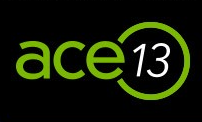
At last week’s Essentials of EM Conference in San Francisco hosted by Mel Herbert, MD, Greg Henry, MD, past president of ACEP, gave the keynote address. He reminded us how important it is for discharge instructions to be concise. Then he asked his audience how many of them gave 10-page discharge instructions. When it became obvious that for many this was common practice, he challenged us to be brief by stating:
“The amount of discharge instructions the patient actually reads is inversely proportional to how long they are.”
Rick Bukata, MD, another leading Emergency Department clinician and educator, weighed in on the same theme last year. In his Emergency Physicians Monthly article “With Discharge Instructions, Less is More,” he questioned the merit of substituting quantity for quality. Specifically, he wrote:
“The trend of voluminous, exhaustive discharge instructions puts the pressure on patients to understand and identify complex risk factors, like infection. According to the research, this is probably a bad idea. . . . Some people seem to think that if discharge instructions are a good thing, then the more the better.”
Why aren’t discharge instructions more short and to the point? You’ve undoubtedly heard Mark Twain’s quote:
“I didn’t have time to write a short letter, so I wrote a long one instead.”
Concise discharge instructions are:
- More patient-specific
- More likely to be read by the patient
- Less likely to confuse the patient
And concise discharge instructions contribute to:
- Improved patient outcomes
- Increased patient satisfaction
- Better risk management
As several Emergency Department thought leaders have recently reminded us, discharge instructions need to be concise and to the point.
Are your discharge instructions short and sweet?
Chris Galassi, MD
CEO, Discharge 1-2-3





![emergency_room[1]](http://www.discharge123.com/wp-content/uploads/2013/05/emergency_room1.jpg)




